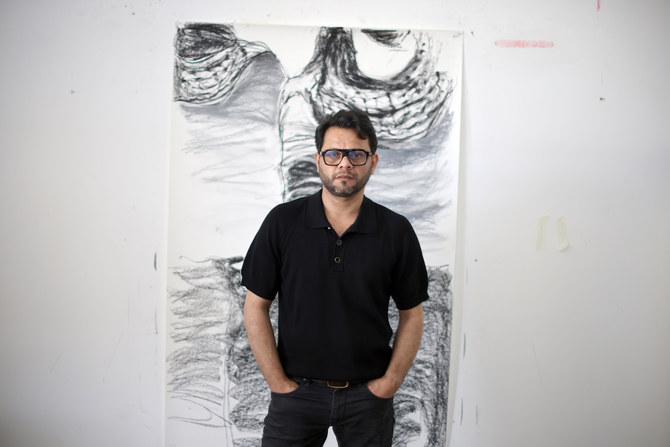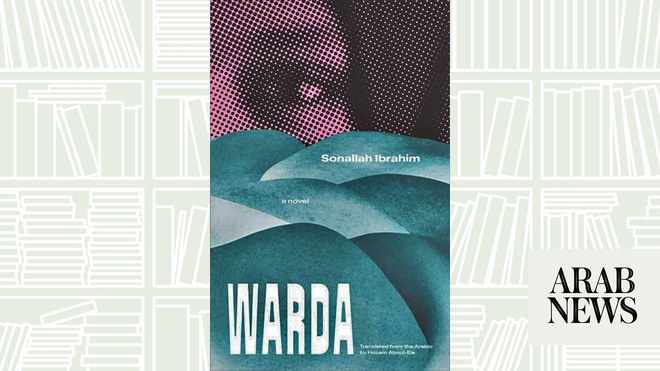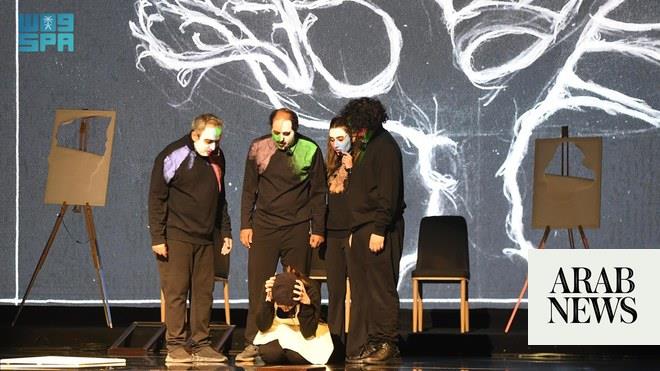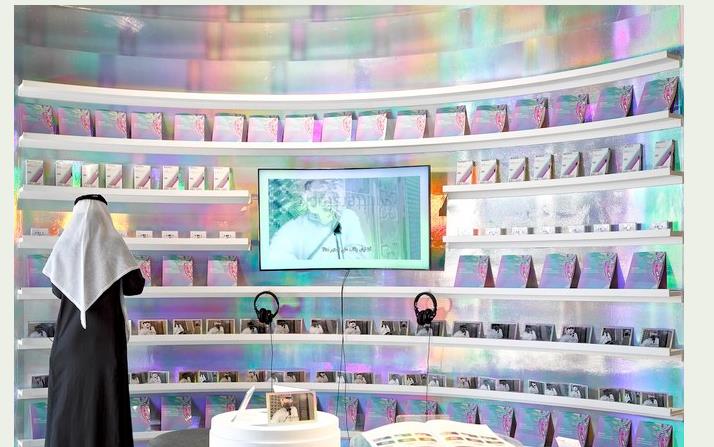
The Gaza-born artist’s latest show documents the Palestinian narrative and allows him to be ‘a voice for my people’
DUBAI: “Me, my family and my city are experiencing a genocide right now,” Gaza-born, Dubai-based artist Hazem Harb tells Arab News. “As an artist I feel I have the responsibility now to be a voice for my people. Art is the one way I can express myself and the emotions of my people during this time. It is also a way to document the narrative.”
For the latest updates, follow us on Instagram @arabnews.lifestyle
That is what Harb has done throughout his career, as his latest show “Gauze” — which runs until Feb. 15 at Tabari Artspace in Dubai — demonstrates.
In “The Spirit of the Spirit,” two bodies drawn in charcoal embrace each other as if for the last time. The man’s head is bowed as if to shield the woman in his grasp. She looks out in agony and sadness, her hair extending out in the wind. It is part of Harb’s “Dystopia is Not a Noun” series and was produced following the outbreak of the current war between the Israeli military and Hamas in October last year, which has further deepened the humanitarian crises in Harb’s hometown.
The two individuals in “The Spirit of the Spirit” writhe in suffering. And the series features several other large-scale of bodies in violent motion, experiencing intense suffering and uncertainty.
“Gauze,” curated by Munira Al-Sayegh, is part of the program marking the gallery’s 20th anniversary. It presents an invigorating, insightful and intensely emotional array of works by Harb spanning around two decades, from when he was first starting his career as an artist in Palestine and subsequently as an art student in Rome, to “Dystopia is Not a Noun,” created over the past two years.
The most obvious link between the different periods of Harb’s work is his emphasis on the body as a landscape through which to explore Palestinian history, collective and personal identity, and the preservation of memories in the face of ongoing obliteration.
Harb says that when he and gallery founder Maliha Tabari — who is also of Palestinian heritage — decided to stage the exhibition, they explored the relationship of the body to geography and land. “Gauze” was originally scheduled to open in November, but was postponed and then “restaged” within the context of current events.
Many of the older works in the show — mostly abstracts — were retrieved by Harb from Gaza last summer, just before they would likely have been lost forever in the current barrage of strikes from Israel.
“My last visit to Gaza was extremely beautiful yet filled with contradictions,” recalls Harb. “I enjoyed every moment to the maximum. I saw beauty everywhere. And I had this feeling that I just had to take my work back with me. The older works are captivating to look at — they seem to exist in a space outside of control.”
His newer works, like the charcoal drawings in the “Dystopia” series, once again see Harb returning to a style that relinquishes control. The gestural movement in his latest works contrasts with the poignant photo montages and mixed-media installations in his earlier work as a young artist growing up in Gaza.
“Gauze” holds powerful meaning for Harb; its etymological roots come from Gaza, where the material has historically been crafted for use in ancient and modern medicine to wrap parts of the body.
Harb’s use of gauze in his work — he says he used the material as a canvas in his childhood and the exhibition includes several pieces from last year created by using gauze on cardboard — takes on even deeper meaning within the context of current events.
“Gauze became a way to deal with grief,” he says. “Now, it is also an instrument of resistance amid the suffering of Palestinians.”
Over the course of his career, Harb has used gauze in various works, including “Burned Bodies,” a video installation created during his studies at Città dell’Altra Economia in Rome in 2008.
The current exhibition highlights the multifaceted significance of the material within the present-day calamity in Palestine, as well as both the metaphorical and corporeal resonance of past and present-day destruction.
Walking through the exhibition provokes a strong physical and emotional reaction. Harb’s works are raw, asking to be seen and understood amid the madness. The works serve not only as a commemoration of the suffering, history and heritage of Palestine but also of the artist’s personal journey as a Gazan native in exile.
Two of the more powerful works are depictions of watermelons — a fruit that has long been a symbol of Palestinian resistance — that were inspired by a 1917 fresco painting on a building in Nazareth. In “1917 I,” a slice of the fruit sits atop the melon, with the knife used to cut it jutting out proudly and prominently — another marker of defiance.
“1917 I” and “1917 II” were both created by Harb this year and are the most recent works in the show.
“They symbolize my life if I were to pass away now,” he says. “I would go with this symbol of resistance.”












